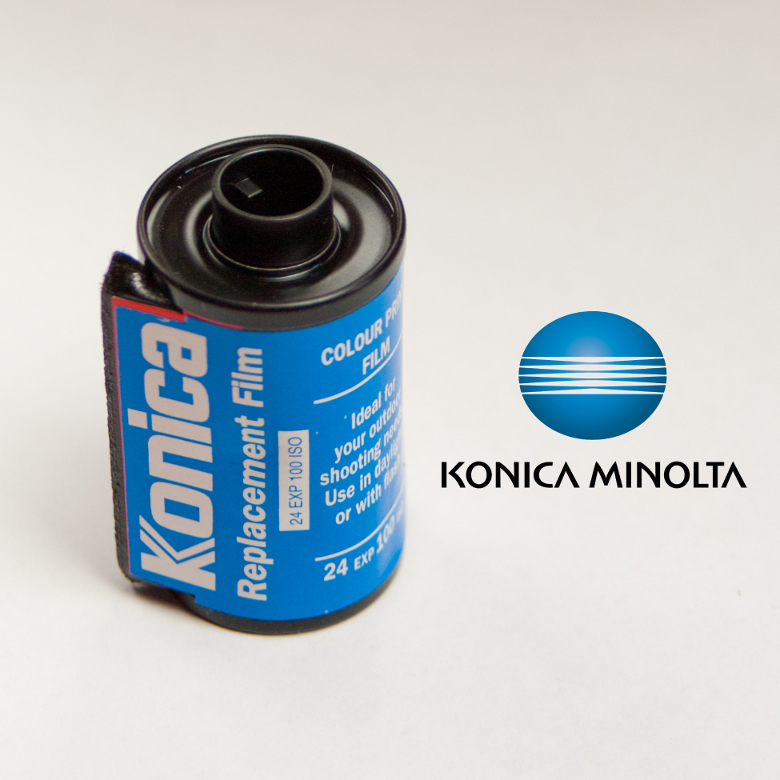
It's a fact of life that businesses fail. Some fail to innovate, some fail to see trends in the market. The photographic industry is no different. In it's relatively short history we have seen some spectacular falls from grace, some have recovered but others not.
To a photographer who trained through the 70’s 80’s and 90’s the list of companies missing from the modern day business is sometimes gobsmacking. Today we are going to have a look at some of the most memorable photographic brands that have sadly faded with time.
Kodak
In the photographic world, there has never been a greater fall from grace than that of Kodak. If you are relatively young and new to photography, it may be difficult to comprehend just how big Kodak was.
Kodak was photography, Kodachrome was a byword for film, the yellow boxes were as ubiquitous worldwide as bottles of Coke or Ford cars.
Kodak was killed by the digital era, not because it failed to innovate but because it failed to realize how important it’s innovations were. Kodak invented what was perhaps the world’s first digital camera in 1975.
It made the correct assumption that digital would seriously undermine it’s film business and so shelved the project. The arrogance was the idea that no one else would come along and reinvent digital.
Of course, they did. And by the time Kodak realized, they were five years behind the competition. Today, the company exists but is a mere shell of its former self with very few products in the consumer photographic market.

To anyone from the pre-digital era, Kodak was photography. By Insomnia Cured Here
Bronica
Bronica was one of the four big medium format camera manufacturers along with Hasselblad, Mamiya and Pentax. In their day Bronicas could be seen from high-end commercial studios to the world’s best travel photographers.
They were a byword for quality and reliability.
Their error was failing to realize there was a demand for high-end digital backs for medium format cameras and failing to innovate for that market. The upshot was that whilst the other three managed to survive the early turbulent years of digital, Bronica went bankrupt in 2005.

Great camera but Bronica, like Kodak misjudged the digital era: By John Nuttall
Minolta
Minolta had a great reputation for innovation through the 1970’s and 80’s. Their SLR cameras were often ahead of the curve in terms of technology and they created the world’s first body integral autofocus system.
It also sold a digital camera in 1995 and was once of the first manufacturers to produce APS film cameras. Minolta never really captured any of the professional market and so felt the need to boost it’s brand awareness, so in 2003 merged with Konica to become Konica Minolta.
The company has ceased “Camera Business Operations” since 2006.

In the 1980's Minolta were at the cutting edge of photographic technology. By Linus
Konica
In the 1980’s whilst Kodak and Fuji locked horns over the professional film market, Konica was making big gains in the consumer film market.
With a huge marketing campaign and catchy jingle “Konica, Colors are Calling You” they were a constant presence in the photographic business. They took a comprehensive approach to the consumer market, producing films, photographic papers and chemicals and even the mini labs to develop them.
Despite merging with Minolta, the parent company decided to close the business down in 2006, however, the DNA of Minolta cameras lives on with Sony’s camera range, Sony having bought out the digital imaging section.

Konica's Colors are no longer calling. By Tom Newby
From Photzy, brings this unmissable “Advanced Composition” Guide, which aims to arm you with all the tricks, tips and techniques of the pros to take your photographic compositions to new heights. You want to me a cut above the rest, right? You will NOT be disappointed.
Polaroid
Creators of the instant image decades before the advent of digital, Polaroid not only had a big foothold in the consumer market with their instant camera and film but also in the professional market.
Professionals used Polaroid backs to determine correct exposure before committing valuable film to a shoot.
Their demise was brought about by their desire to innovate. In 1977 whilst at the top of their game in the stills market, they launched Polavision, an instant home movie system.
Due to technical issues associated with creating an instant film, Polavision images were very dense and required a dedicated projector to view them. Polavision was a major failure leading to big losses for the company and eventually into bankruptcy protection.
Polaroid remains today as merely a brand name for cheap electronics and has very little to do with the photographic market.

Instant images before digital. Polaroid exists but is merely a brand name these days. By Pasi Mämmelä
A Quick Summary
These are just a few of the big names that are no longer with us in the photographic market. I am sure the in the future, some of the names we take for granted today will also disappear but they will be replaced by new companies, the ones that spot trends and innovate.
From Photzy, brings this unmissable “Advanced Composition” Guide, which aims to arm you with all the tricks, tips and techniques of the pros to take your photographic compositions to new heights. You want to me a cut above the rest, right?
Further Resources
- How Many of These Seven Iconic Cameras Do You Know About? by Jason Row
- Using Vintage Camera Lenses With Ease: 5 Simple Considerations by Dzvonko Petrovski
- A Brief History of Photojournalism by Rachael Towne





6 Comments
Great article! A name I personally miss, is Contax.. Great cameras, superb Lenses.. Sadly, as far as I know, no longer in operation:-(
Not quite correct about Polaroid. They now produce a pocket sizw printer that prints 3″x2″ images straight from the camera. Great for those who want to share sone of their street photography with street side subjects.
A nice step through history for those who joined at the digital revolution.
The article is wrong about a couple of things.
Although Kodak and Polaroid branded products are still available, they have no relationship with the original photographic brands of those names. The use of the brand names was licensed to unrelated businesses. Unfortunately the products released, at least initially, by the licensees were sub-standard and disappointing.
Another brand that died was Topcon, who made the first through the lens metering system.
Strange that you mention Konica but limit its activeness to film. Throughout the sixties and well into the seventies, it was one of the most innovative OEMs. It pioneered metal shutters, 1/2000s shutter speed, and automatic exposure.